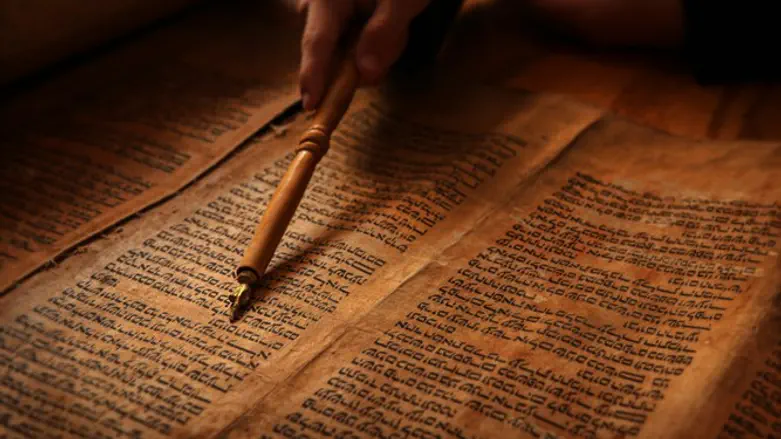
An environmental scientist turned rabbi has created the first Sefer Torah for the visually impaired, with text written in Hebrew Braille.
As reported in the Pittsburg Post-Gazette, Rabbi Lenny Sarko of Greensburg, Pennsylvania spent many years creating recycling systems for American corporations before turning to rabbinical studies 15 years ago. He subsequently became the rabbi for synagogues in Indiana, Tampa, Florida and Columbus, Ohio. Two years ago, he began his present position as the rabbi of Congregation Emanu-El Israel in Greensburg.
About five years ago, Rabbi Sarko, lost most of the vision in his right eye and some of the vision in his left eye due to a condition stemming from Type 2 Diabetes. His vision is currently stable and he can still read but the damage to his eyes was permanent. He cannot do certain tasks, such as driving at night.
“I kind of have a foot in both worlds, both those who struggle with vision issues and the sighted,” Rabbi Sarko said in an interview with the Post-Gazette. “Being that and a rabbi, it put me in a rather different position than most people might ever find themselves in. ... Not being able to read was a potential horror story.”
He explained that as a rabbi the idea that he might not be able to read certain books was “very scary.”
“That started me to say, ‘OK, as a Jew, you find solutions.’ The first solution was to learn English Braille. After that, you start asking other questions like, ‘If there’s English Braille, is there Hebrew Braille?’ Yes. ... Then, I asked the question: ‘Is there such a thing as a Braille Sefer Torah?’”
He unsuccessfully searched for a Braille Sefer Torah for three years. Eventually, he decided to create what is likely the world’s first Braille Sefer Torah.
Rabbi Sarko commissioned a special Sefer Torah in Braille. The Torah took a very long time to produce because the rabbi spend a whole year developing an error-free method of manually making Braille holes in a scroll. He had to eliminate the chance for potential error due to the issue of a Torah scribe having to start over if even the smallest mistake is made.
The process perfected, Rabbi Sarko said, “My plates can be used to make hundreds and thousands of Torahs going forward.”
He added that he can produce a Braille Sefer Torah is about four or five months by himself. The process can be reduced to one to two months if he has help.
Rabbi Sarko explained that Braille is not a language in itself but a way to represent a language in a way that can be interpreted by the visually impaired. His Sefer Torah is not a translation but Hebrew written in Braille.
While Torahs are not supposed to be touched while reading, Braille is meant to be read by the visually impaired through touch. Rabbi Sarko believes in this case, an exception is allowable.
“In one respect, you’re telling a blind or visually impaired person they’re a full member of the community. Then you’re turning around and telling them they can’t do this,” he said. “To me, that’s an important part, and I started to ask questions. ... Judaism across its millennia has always adjusted to context. How do we do a mitzvah in this situation?”
Rabbi Sarko said that his plan is to produce more Braille Sefer Torahs and to lend them to congregations across the United States. He is applying for grants through his Jewish educational nonprofit, Devarim Institute.
He said that there are approximately 300,000 blind or visually impaired Jews in the United States.
He said the opportunity for a visually impaired person to read the Torah is “so meaningful for them. I can’t think of a nicer gift to give to people.”
